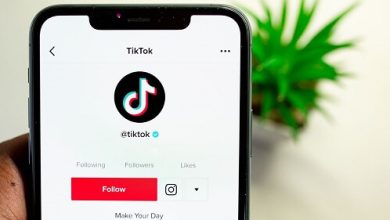5 Ways to Deal with Smartphone Addiction
If you tell someone you’re addicted to your smartphone, chances are they will roll their eyes at you unsympathetically. Many people don’t believe that cell phones can be addictive, and while it might be true that they’re not addictive in the same way certain substances are, psychologically they have many of us totally hooked. And it’s not just young people with their heads in the cloud (literally, in this case). People of all ages report anxiety when separated from their phones or in a place without good reception or wi-fi. Phone addiction is a problem that needs to be taken seriously. Luckily, there are proven ways to help you break this addiction, and here we will look at five of the most successful methods.
#1 Use Blocking Apps to Set Limits
Watch any group of people who are waiting for more than about 45 seconds, and you’ll notice a good percentage of them pull out their phone… almost as if it was a reflex action. But what if you knew that social media access and other time-wasting sites were blocked? Would you still pull out your phone? Probably not so much. This is the idea behind an app to stay focused called a ‘blocking app.’ This app is an incredibly useful tool for helping set limitations on what content one sees at what times. Tens of millions of people – from students to office workers to stay-at-home parents – now use a blocking app to help keep their cravings at bay. After a free download you have the app sync across all your devices and then set it up so it blocks sites that are causing you to waste time at certain times. Students may want to block out the internet or social media, for example, during times when they should be doing homework – while office workers may want to block off the 9:00 a.m. to noon part of their workday so they are less tempted to waste time surfing news sites, or sports sites, or whatever it is that often takes up huge chunks of the beginning of their working day. A blocking app is all about helping you make choices that limit your exposure to certain parts of the web.
# 2: Keep Bedrooms as Phone-Free as Possible
Psychologists call blocking apps and other similar approaches “nudging,” and what they mean is that when you downloaded the app and decided what sites to block and at what times, you are “nudging” yourself toward forming new habits. Nudges can help push us back towards productivity and getting stuff done. Another nudge is a no-phone-in-the-bedroom rule. If you charge your phone near your bed, the chances of you picking it up and scrolling through it before trying to go to sleep are high. Sleep is a foundational part of physical and mental health and bright screens cut into our sleep quality. Try charging your phone via a socket that’s out of reach. This way, once you get into bed, you won’t feel as tempted to crawl out of bed and go to your phone. This will be a huge aid in getting better sleep. Phones in the bedroom should generally be a no-no as the backlit screen keeps us awake and messes with the human circadian rhythm. A vicious cycle is then perpetuated whereby we stay up later and get less sleep, prompting us to waste more time the next day because we’re tired… and so on and so on.
# 3: Abstinence Experiments
Those who decide they need a more serious intervention might consider taking one day off each week – perhaps a Saturday or a Sunday – where you turn off your phone and perhaps even lock it away in a drawer. Some people swear by what they call a ‘30-day experiment’ whereby using one of the aforementioned blocking apps, they set up the phone to be used only for calling and texting… and no other apps are allowed. Zero. Not even a map app is permitted and some even block access to scrolling through camera photos during the 30 days. At the end of these 30 days, most report great success in developing an awareness of how much unintentional time they waste due to their phones, and say taking a 30-day break can help realign one’s priorities.
# 4: Create Distance
Christopher Mims is a technology columnist for the Wall Street Journal and as such, you can imagine, he uses tech constantly. But at the end of each workday when he comes home, he puts his phone into a kitchen cabinet and walks away. If it were to ring, he would be able to go and answer it… but the physical reality of it being in a kitchen cabinet and not in his pocket is a psychological and physical break with that connection to the phone. As Mims wrote, “The more you physically remove the phone the more you can build a habit of having some ability to ignore it when it’s on your person. “
#5: Dump Your Smartphone and Get a ‘Dumb’ Phone
For some people, a smartphone is just too much. We have access to the internet at the office and at home with computers, tablets, laptops, etc. In other words, there’s no shortage of ways to get online. Do we really need to have all of the world’s information in a rectangle that fits in our pocket as well? This is where a phone such as the ‘Light Phone’ comes into the picture. The Light Phone is just one example of a ‘dumbphone’ that some are using to shake their addiction. It has an e-reader type screen but has no access to the internet. You can make calls and send messages… and it has a few simple apps that you can enable or disable such as a calculator or an alarm – but in general, it is a tool for one thing only… communication either via text or talking. One recent tech reviewer who gave up her smartphone for a Light Phone as an experiment says she’s considering making the switch permanent.
















